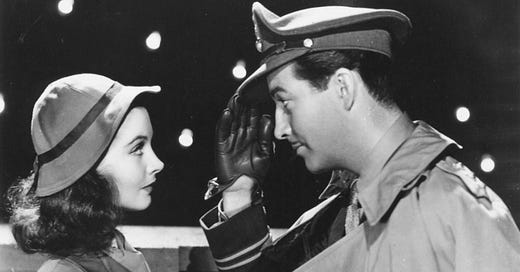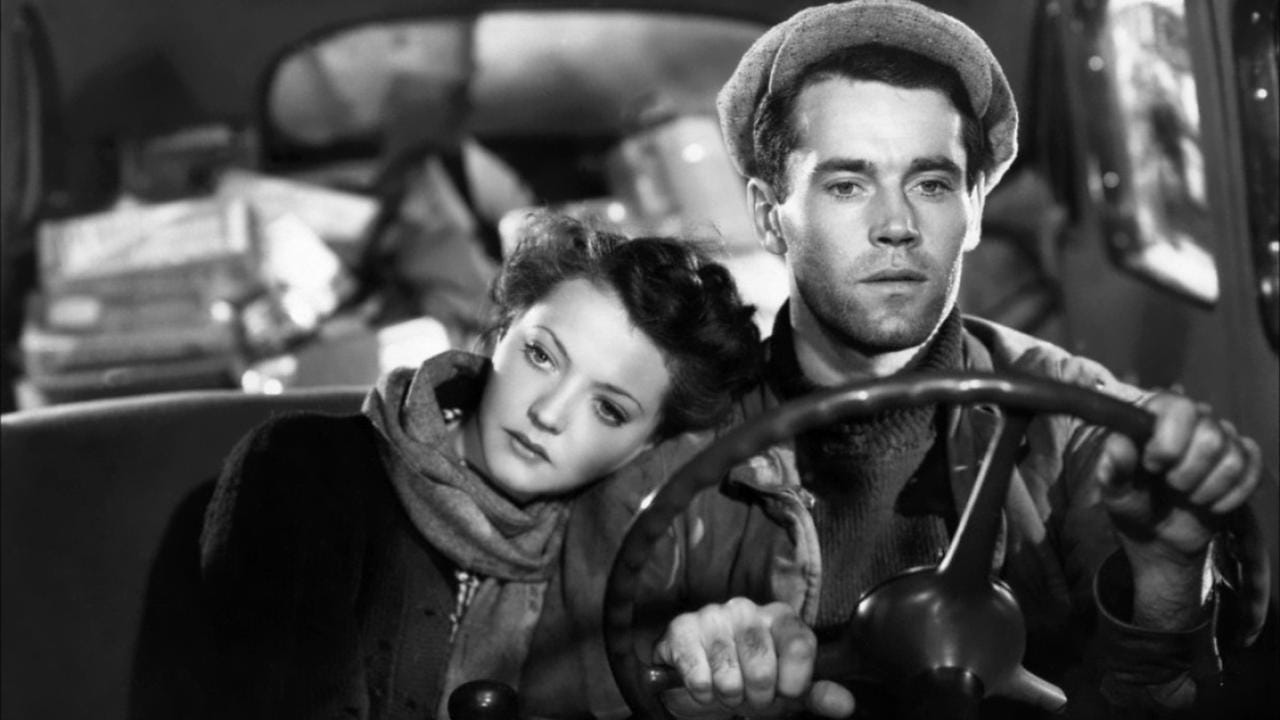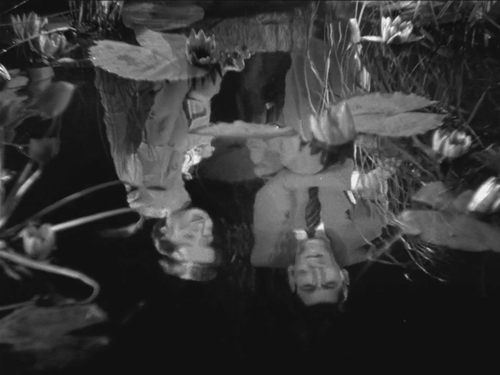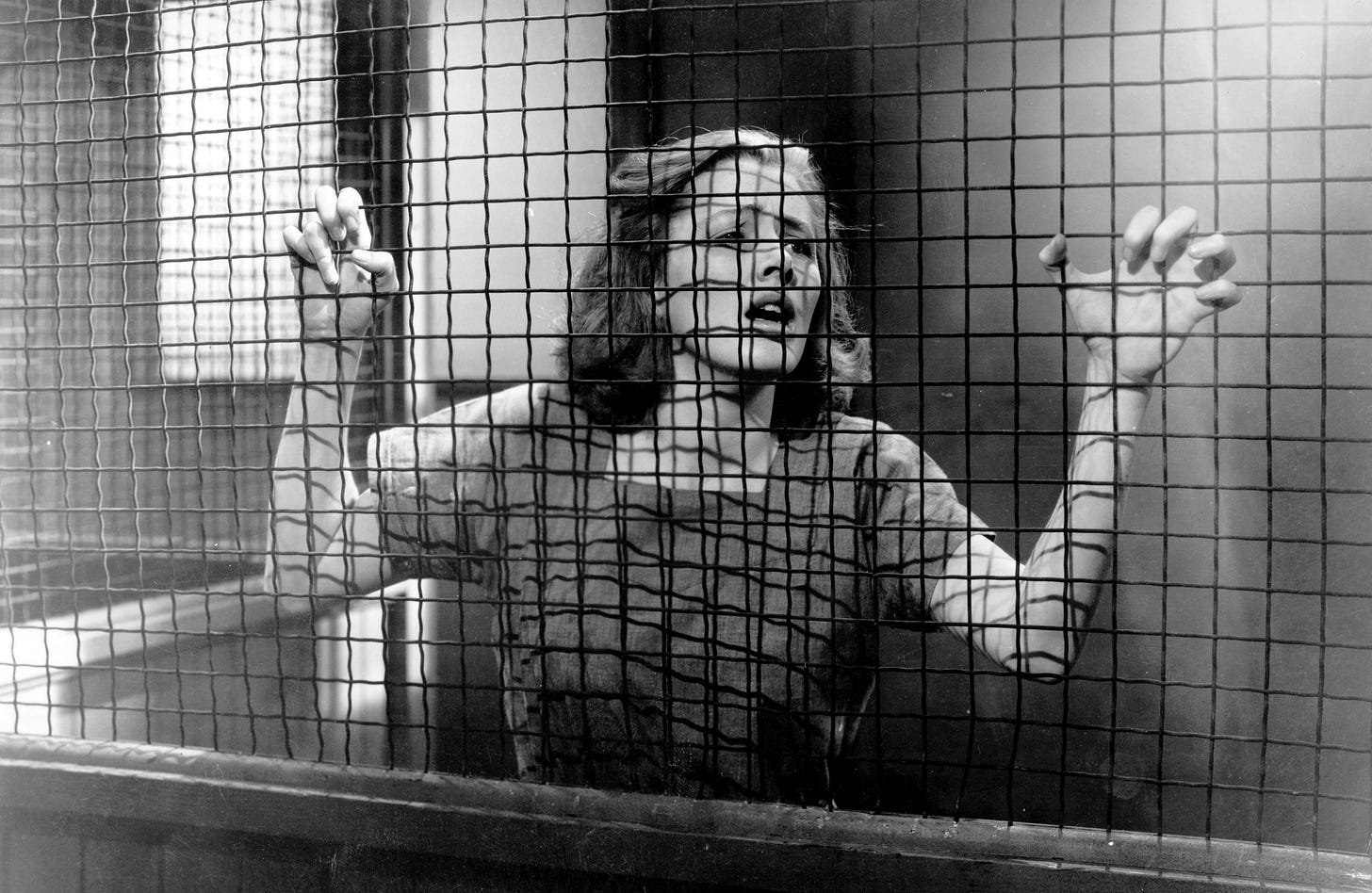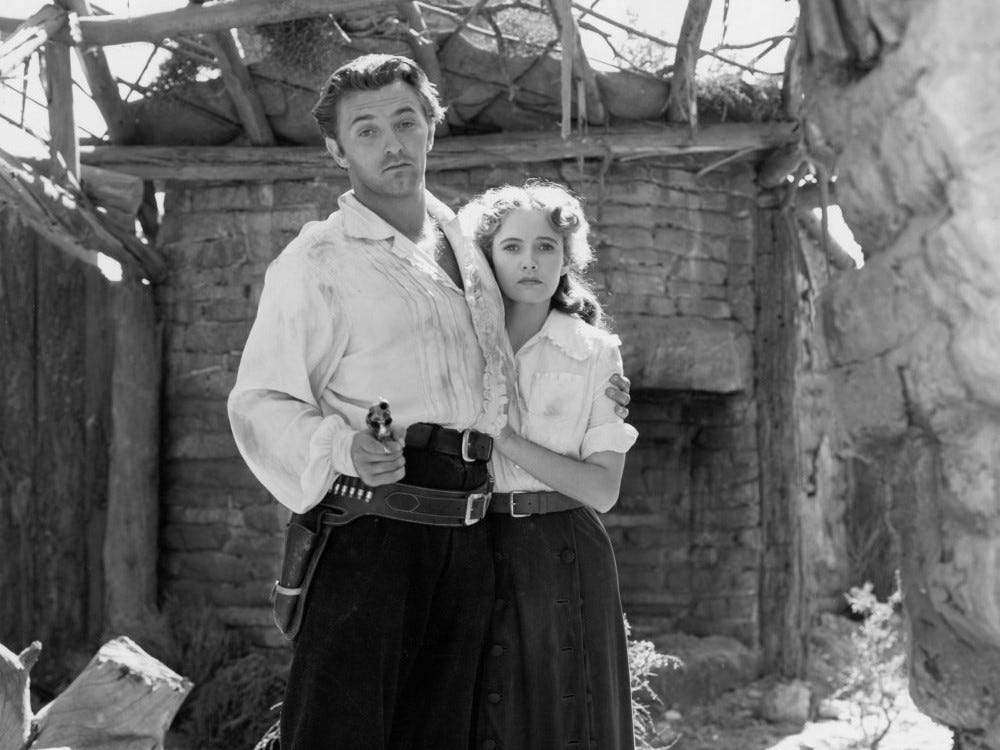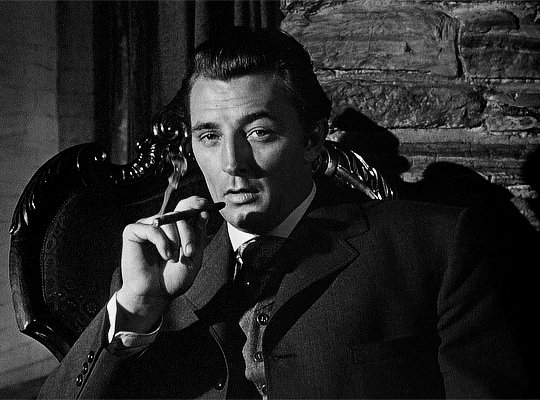Hey, Classic Film Fans!
I hope this newsletter finds you in good spirits. Another month has flown by in 2024, and I’m back to share some of my favorite new-to-me discoveries of the past month. As always, cutting this list down to four, plus an honorable mention, was a tall order. But I’ve done it, and I think you’ll find something interesting below to check out soon!
HONORABLE MENTION
YOU ONLY LIVE ONCE (1937)
“Three-time loser” Eddie Taylor (Henry Fonda) is a recently reformed ex-convict who marries his sweetheart Joan (Sylvia Sidney), who has stayed by his side through thick and thin. Eddie gets a job with the help of Joan’s Boss (Barton MacLane), and with this new job, he buys a new home for them to live in. Eddie deserves to live out this “American Dream” after becoming reformed, but the world has different plans.
Only Fritz Lang’s second film in the U.S. after immigrating from Europe, the story of these two star-crossed lovers on the run is loosely based on the exploits of notorious Texas criminals Clyde Barrow and Bonnie Parker. If you’ve read this newsletter before or follow me on Letterboxd, you know that some of my favorite film tropes are lovers on the run and doomed relationships. This film delivers on both fronts.
As you may expect from the man who arguably gave us the first noir in M (1931), You Only Live Once (1937)1 is a proto-noir, stylistically mixing German Expressionism and French Poetic Realism (see GIF below). Lang concocts some striking compositions with the help of his cinematographer Leon Shamroy through the masterful use of lights, shadows, and fog to add emotional depth and intensity to the scenes. One particular scene in a prison yard is both beautiful and chilling. That scene's chiaroscuro lighting and fog perfectly reflect Eddie's inner turmoil.
Henry Fonda gives a satisfactory performance as Eddie. However, I’ll be honest: it took me a bit to believe he was an ex-convict. Fonda has such an innocent face that it’s hard to think he could do anything wrong. But by the end, he convinced me.
The standout performance for me, though, was Sylvia Sidney. I’ve seen her in a few films before this, and it always amazes me how grounded and touching her performances are. She’s one of the stars I’ve discovered in the past couple of years that I’ve come to appreciate a ton. She had a prolific career, and anyone my age may remember her from the iconic film Beetlejuice (1980) as Juno, the case worker in the afterlife.
There are still many films I haven’t seen from Lang’s output during his stint in Hollywood, but of the ones I have seen, You Only Live Once (1937) is undoubtedly my second favorite, just behind The Big Heat (1953). It’s still a powerful but bleak film that deals with our society’s prejudice towards ex-convicts and the power of love and redemption.
Where to Watch You Only Live Once (1937) Now
3:10 TO YUMA (1957)
Based on a short story of the same name written by Elmore Leonard, this classic Western follows the gripping journey of a rancher (Van Heflin) tasked with escorting a notorious outlaw (Glenn Ford) to the town of Yuma to stand trial. As they embark on a dangerous and treacherous journey, tensions rise, alliances are tested, and moral dilemmas emerge.
As I have written before, Westerns were a staple in my household growing up. James Stewart, John Wayne, and Clint Eastwood regularly visited Casa Gutiérrez. So, I’ve always had an affinity for the genre and all its sub-genres. This film was one of the few Westerns from the Criterion Collection I still didn’t have in my archive, and my family was wonderful enough to gift me a copy for Christmas.
From the film’s opening credits, I was hooked. The opening shot, captured by cinematographer Charles Lawton Jr., of the vast, rugged, and dry landscape of the Old West, with a stagecoach moving across the plain in the distance, while Frankie Laine’s iconic version of the song ‘3:10 to Yuma’ swelled up in the background, immediately drew me into this world.
While the cinematography and theme song are fantastic2, the incredible dynamic between Van Heflin and Glenn Ford trading verbal blows is at the film's heart and made me fall in love with the film. Watching their interaction, I couldn't help but see parallels to the epic battle between St. Michael and Lucifer (Devil/Satan) I learned about in Catholic School: the ultimate struggle between good and evil.
Ford, who typically played charming and likable characters in many of his previous films up to this point, plays against type as a charismatic yet ruthless and silver-tongued outlaw who exudes an air of self-assurance. To an extent, Van Heflin also plays against type as he typically plays more heroic and virtuous characters, but in this film, his character is more morally ambiguous and conflicted.
To me, this film has stood the test of time. It’s still a gripping and thought-provoking character-driven story that skillfully blurs the lines between right and wrong and touches upon timeless themes such as honor and sacrifice. It may have my favorite ending shot of any Western, too.
Where to Watch 3:10 to Yuma (1957) Now
CAGED (1950)
As Eddie Muller puts it in his Noir Alley intro, “The Mother of all Women in Prison movies,” Caged (1950) tells the harrowing journey of a young woman, Marie Allen (Eleanor Parker), who is sentenced to a women’s prison after being convicted of a crime. As Marie navigates the brutal and dehumanizing conditions of the prison system, she must confront the harsh realities of life behind bars, including corruption, abuse, and the struggle for survival.
The film is based on the investigation of women's prisons in the United States by ex-news reporter Virginia Kellogg. Warner Bros producer Jerry Wald hired Kellogg intending to make a film similar to another famous Warner Bros prison drama, I Am a Fugitive from a Chain Gang (1932), whose release led to prison reform in six states. The aim was to have a similar impact on women’s prisons.
The results of Kellogg’s investigation were worse than she ever imagined. Not only did she come up with the story of this film and co-write the Oscar-nominated screenplay based on her research, but she also wrote a magazine article titled “Inside Women’s Prison,” published in the June 3, 1950 edition of Colliers that coincided with the release of the film, which discussed the inhumane conditions of the prisons she visited (and briefly spent time as an inmate in) and how they fostered recidivism.
The film's authenticity stems from the incorporation of Kellogg's investigation details into the characters and situations that arise during Marie Allen's imprisonment. The film is brilliantly acted, and the cast is filled to the brim with former and future Oscar nominees such as Eleanor Parker (for this film), Agnes Moorehead, Hope Emerson (for this film), Jan Sterling, Ellen Corby, and Jane Darwell3.
Caged (1950) is an excellent example of how film noir is more of a style, mood, or movement than a genre. Throughout the film, the main character, Marie Allen, experiences an internal psychological struggle that eventually becomes physically manifested, one of film noir's hallmarks. Furthermore, the film contains some violent scenes, particularly those involving the cruel prison matron, Evelyn Harper, played by Hope Emerson. The ending is both grim and heartbreaking, serving as a powerful critique of the women's prison system, just as the film's producer, Jerry Wald, intended it to be.
Where to Watch Caged (1950) Now
WATERLOO BRIDGE (1940)
Waterloo Bridge (1940) is a remake of the 1931 film adapted from a 1930 play of the same name. The story follows an army colonel named Roy Cronin (Robert Taylor) on the day Britain declares war in World War II, who reminisces about how he met and fell in love with a ballerina named Myra Lester (Vivien Leigh) during World War I. The film is told in an extended flashback, depicting how their relationship blossomed during the chaos of war and how they faced challenges that tested their love.
Wanting to capitalize on Vivien Leigh’s popularity after her exceptional performance as Scarlett O’Hara in Gone with the Wind, MGM bought the 1931 version of Waterloo Bridge from Universal to produce the remake with Vivien Leigh starring. Having already begun a romantic affair with Lawrence Olivier, she wanted him to star opposite her. However, Olivier had already been contracted to make MGM's other romantic drama, Pride and Prejudice (1940), which was being filmed at the same time as Waterloo Bridge (1940). So instead, MGM cast resident lover and fan sweetheart Robert Taylor in the role.
While Leigh didn’t get her leading man, the chemistry between her and Taylor in every scene of this film is palpable. It’s in large part due to Leigh’s captivating performance. Her ability to convey emotions through subtle expressions adds depth to her character in this film, allowing the audience to empathize with her. She perfectly captures Myra’s vulnerability, strength, and inner turmoil as she navigates the challenges of wartime and the complexities of love.
Although there are many examples of her brilliant acting in this film, my favorite scene (no spoilers!) is when she meets Roy’s mother after reading some “news.” You know what I’m talking about if you've watched the film. For me, without a doubt, that’s Vivien Leigh’s Oscar clip.
The film itself has the lush production design and cinematography one expects from an MGM film, with the latter being nominated for an Oscar. My favorite scene, and a great example of the splendid production design and cinematography, is where Leigh and Taylor dance a farewell waltz while the orchestra plays “Auld Lang Syne.” As they dance, each time the orchestra finishes the chorus, they put out some candles in the room until they’re all put out by the end of the song. It’s incredibly romantic, and the mood is even more heightened because no words are exchanged between Leigh and Taylor as they dance, and no lyrics of “Auld Lang Syne” are sung until the end. Is “Auld Lang Syne” the most cinematic and romantic song in all cinema?
Waterloo Bridge (1940) is now one of my favorite romantic dramas. The film is a beautiful exploration of love, sacrifice, and the impact of war on individuals’ lives, culminating in a heart-wrenching and poignant tale of love and loss. Kendra Bean’s “Vivien Leigh: An Intimate Portrait” mentions that the actress once said that of all the films she made, this was her personal favorite. Robert Taylor reportedly also said the same once. It’s not hard to see why. If someone ever asks me what Vivien Leigh film they should watch to see her at the height of her powers, I’ll tell them to watch this one.
Where to Watch Waterloo Bridge (1940) Now
PURSUED (1947)
Widely considered the first noir Western, it follows the story of Jeb Rand (Robert Mitchum), a man haunted by his traumatic past and the shadows of his childhood. Raised by a foster family after his parents were killed, Jeb struggles to come to terms with his past and the mysterious forces that seem to be working against him. As Jeb delves into his past and confronts the demons that haunt him, he becomes entangled in a web of deceit, betrayal, and violence.
Continuing the Robert Mitchum journey, Pursued (1947) is a film I’ve long wanted to watch. It’s a grim and powerful film about how a father's sins are passed down to his son and how, even long after, the son must pay the price for them. As usual, Robert Mitchum delivers an outstanding performance with his trademark brooding presence and stoic demeanor. He wonderfully captures the character’s sense of isolation and resilience in facing his inner and outer demons, drawing the viewers into his character’s journey of self-discovery and redemption.
The film also stars Teresa Wright, who I’ve long admired in films such as Shadow of a Doubt (1943) and The Best Years of Our Lives (1946) for her ability to bring a sense of warmth and compassion to her characters. She brings those qualities here in her portrayal of Thorley Callum, a strong and independent woman who grows up in the same foster family as Jeb and becomes his romantic interest.
As much as I loved Teresa Wright in this film, the writing doesn’t do her character much justice. Like Henry Fonda, Teresa Wright has the face of an angel, and it’s hard for me to buy that she would do anything malevolent. I just never believed she would do some of the actions her character contemplates taking in the latter half of the film, and the writing of her character poorly attempts to fix that issue.
This concern and many others with the writing are smoothed over with the superb direction of Raoul Walsh and the striking cinematography of the legendary James Wong Howe. Not only are Walsh and Howe able to capture the vast vistas that are a trademark of Westerns in Pursued (1947), but they also capture the dark, gloomy, and claustrophobic atmosphere of noir with sharp angles, soft lighting, and various close-up shots.
I love nothing more than a noir-infused Western, and Pursued (1947) delivers in spades.
Where to Watch Pursued (1947) Now
That’s the list! What films in this newsletter do you plan to add to your watchlist? What were some of your favorite new-to-you watches of February 2024? Let me know in the comments below, or contact me through any of my social media outlets!
Until next time, stay safe, be kind to yourself, and continue watching great films! Thanks for reading!
I could have sworn my generation created the expression “YOLO,” but it looks like Lang beat us to the punch.
I’ve played the theme song at least 100 times since watching the film, and I wouldn’t be surprised if it shows up on my Spotify Wrapped at the end of the year.
The only Oscar winner of the bunch for her performance in Grapes of Wrath (1940)

